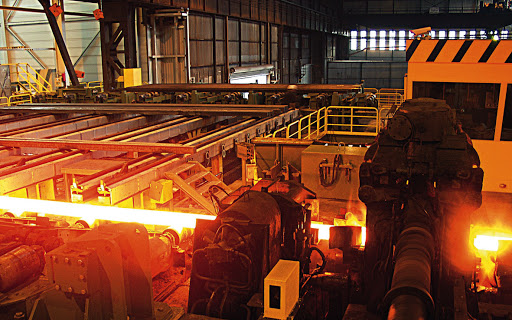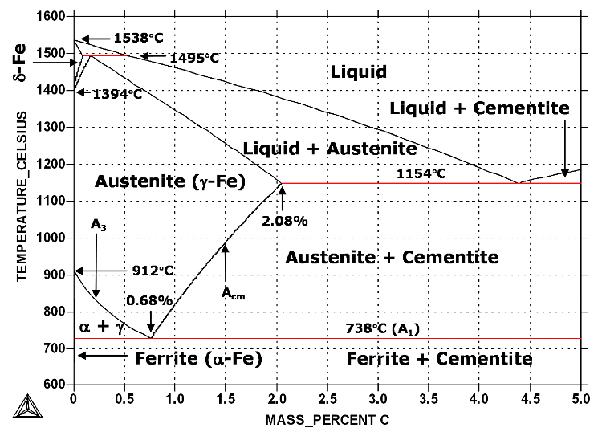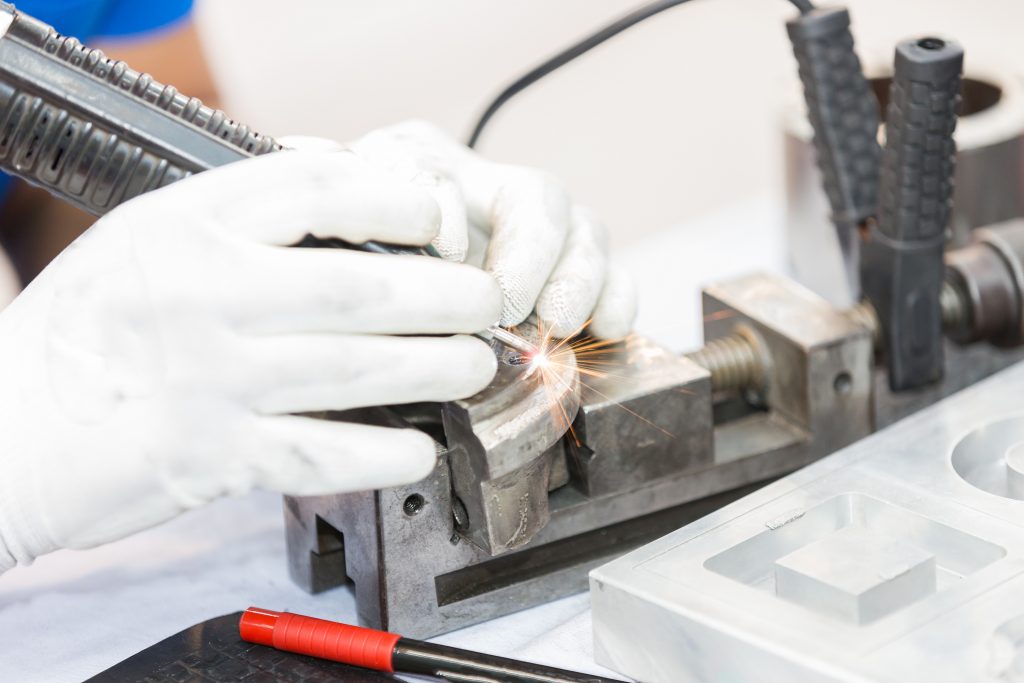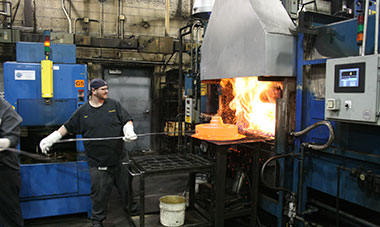Steel heat treatments involve raising the steel’s temperature at or above a predetermined critical temperature and then cooling it down. The extreme heating changes the properties of the alloy, and then the cooling process sets those changes.
In this article, we’ll cover the many different types of heat treatments, as well as their benefits and industry applications.
We’ll start first with annealing.
Annealing
Annealing is a steel heating treating process that involves taking steel that has typically already gone through heat treatment and putting it through a softening process.
It’s typically done to relieve internal stresses caused by a rapid cooling process. In general, the annealing process is done to refine the metal’s grain structures, to make the metal more ductile, and to soften the metal.
When Is Annealing Required?
Annealing is required when companies want steel with improved ductility, tighter material tolerances, and improved electrical conductivity. The controlled cooling process makes the annealed steel the ideal fit for high-precision machining applications. It’s also a good solution for cold working, as annealing the steel helps to soften the material so that no fractures or cracks occur when cold working is being done.
Normalizing
Although normalizing steel and annealing steel are similar processes, there are a few differences.
The main difference is that normalizing has a faster cool-down process.
This is because the metal is transferred out of the hot room and back into the open plant at ambient temperatures. Normalizing is typically used after processes that heavily manipulate metal (forging, welding, and machining).
What Is Normalized Steel Used For?
Normalized steel is needed for parts that will be in extreme or vigorous conditions. The normalizing process relieves stresses within the metal. Additionally, normalized steel can be found in a wide array of industries, including automotive, aerospace, and rail. It’s often used for certain products like steel bars, axles, spindles, and shafts.
Hardening
Hardening steel and other metals helps increase the material’s strength, elasticity, and toughness.
This makes the hardened steel less susceptible to plastic deformation.
There are two main types of hardening processes: case and precipitation hardening.
Case/Surface Hardening
Case hardening steel increases the steel’s surface hardness while leaving the core of the steel minimally changed. This ensures that this inner core remains more malleable or ductile when compared to the hardened surface layer. Examples of case hardening include gas carburizing, gas nitriding, and low-pressure carburizing.
Precipitation Hardening
Precipitation hardening, sometimes called age hardening, is a three-phased process that increases a material’s yield strength, which is the highest stress a given material reaches before it deforms. The precipitation hardening process is typically a through hardening process, in which it hardens out the entirety of the material to one hardness range. The three stages of this process are: solutionizing, quenching, and aging.
Hardened Steel Applications
There are thousands of applications for hardened steel. Its high wear resistance and hardened surface layer mean it’s ideal for any application where direct impacts are common. It can be used for multiple industrial components within engines and machinery, like bearings, driveshafts, gears, and nozzles. It is also used in residential and commercial construction.
Quenching & Tempering
Quenching is essentially the rapid or controlled cooling of the steel in order to change its mechanical properties (tensile strength, durability, etc.).
Although the steel’s hardness increases after quenching, it may not be as ductile as needed for certain applications. This is when the steel needs to be tempered.
Tempering involves reheating the steel until it reaches its desired levels of ductility and hardness.
Which Applications Need Quenched & Tempered Steel?
There are thousands of applications for quenched or tempered steel. It’s used to build bridges, gears, storage tanks, and everyday tools like drills and saws.
Learn More About Steel Heat Treatments From SST
Not sure what type of steel heat treatment you need? Don’t worry, our experts at SST are here to help. SST has been providing heat treatment services to clients for over six decades. We work with clients in a wide array of industries, ranging from military and aerospace to automotive and heavy equipment.
If you would like to learn more about steel heat treatments, please contact us today.





